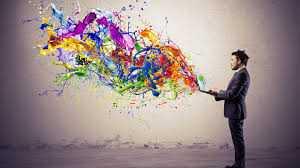Computational Artefacts
- The modern computer is a hierarchically organized system of computational artefacts.
- Hierarchical organization is a means of managing the complexity of an entity.
- Computational artefacts are made things; they process symbol structures signifying information, data, or knowledge (depending on one’s point of view and context).
- There are three classes of computational artefacts.
- One class is material. These artefacts, like all material objects encountered through history, obey the physical laws of nature. e.g. all kinds of computer hardware.
- Some computational artefacts, however, are entirely abstract. They not only process symbol structures, they themselves are symbol structures and are intrinsically devoid of any physicality. So physico-chemical laws do not apply to them. They neither occupy physical space nor do they consume physical time. e.g. algorithms, methodologies, languages, turing machines.
- The third class of computational artefacts are the ones that most lend strangeness to computer science. These are abstract and material. To be more precise, they are themselves symbol structures, and in this sense they are abstract; yet their operations cause changes in the material world; moreover, their actions depend on an underlying material agent to execute the actions. Because of this nature, this class is called liminal (meaning a state of ambiguity, of between and betwixt). e.g. computer programs or software is one vast class of liminal computational artefacts.
- Computer science is the science of computational artefacts.
- Herbert Simon called all the sciences concerned with artefacts (abstract, liminal, or material) the sciences of the artificial. They stand apart from the natural sciences because they must take into account goals and purposes. A natural object has no purpose.
- The sciences of the artificial entail the study of the relationship between means and ends: the goals or needs for which an artefact is intended, and the artefact made to satisfy the needs. The ‘science’ in computer science is, thus, a science of means and ends. It asks: given a human need, goal, or purpose, how can a computational artefact demonstrably achieve such a purpose? That is, how can one demonstrate, by reason or observation or experiment that the computational artefact satisfies that purpose?
39
74 reads
CURATED FROM
IDEAS CURATED BY
The idea is part of this collection:
Learn more about books with this collection
Why happiness is the ultimate goal
The importance of creating value
How to create wealth in the modern era
Related collections
Similar ideas to Computational Artefacts
The Stuff of Computing
- In its most fundamental essence, the stuff of computing is symbol structures (systems of symbols, that is, entities that ‘stand for’, represent, or denote other entities like data, information or knowledge).
- Computing is symbol processing.
- Any automaton cap...
The computer may never be so programmed; but the fact that it could is an essential fact about it, without which it would not qualify as a computer. The counterfactuals that matter to science and physics, so far neglected, are facts about what could or could not be made to happen to physical syst...
Fill the well
This well is the place you take all your ideas (no matter how abstract they are) and get them stored as actual information, so they can be used.
Get your ideas into a recorded state. Doing this over time means your idea well becomes both parts of your brain and a physical extension of i...
Read & Learn
20x Faster
without
deepstash
with
deepstash
with
deepstash
Personalized microlearning
—
100+ Learning Journeys
—
Access to 200,000+ ideas
—
Access to the mobile app
—
Unlimited idea saving
—
—
Unlimited history
—
—
Unlimited listening to ideas
—
—
Downloading & offline access
—
—
Supercharge your mind with one idea per day
Enter your email and spend 1 minute every day to learn something new.
I agree to receive email updates
